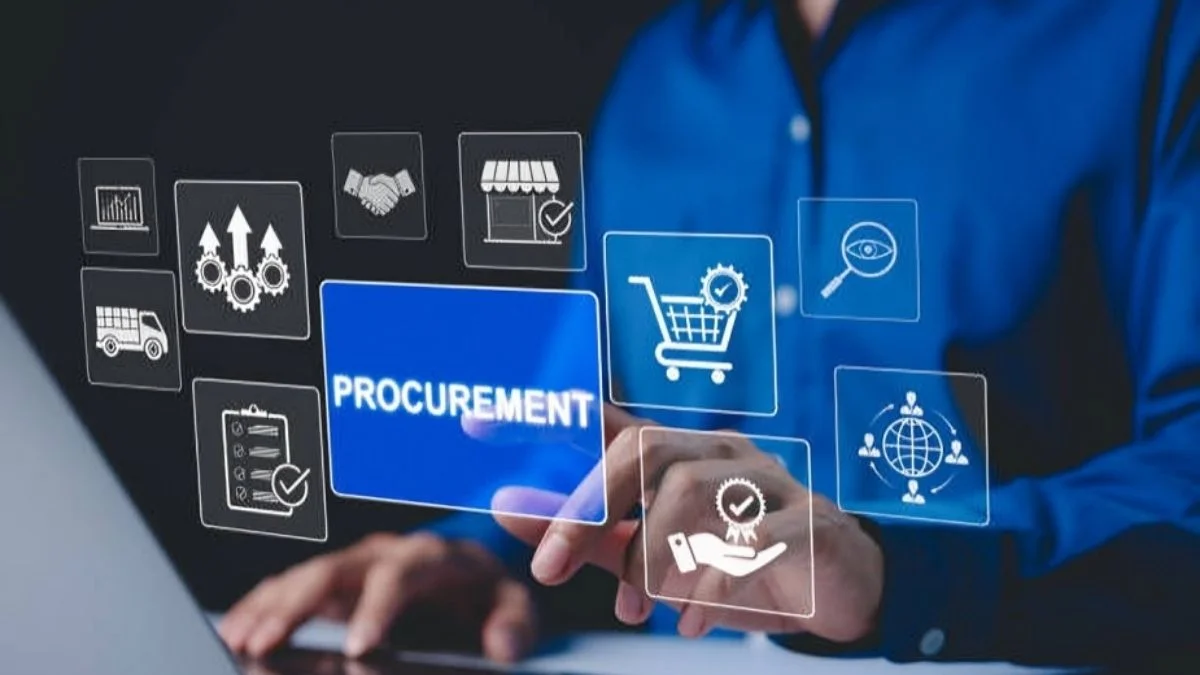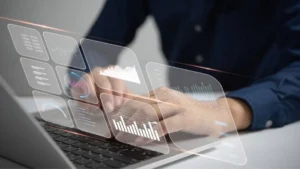TECHNOLOGY
Understanding Procurement Software: Enhancing Efficiency in Business Operations

It will create focus points for sustainability by getting the procurement processes together quickly and effectively in this tough marketplace. Depending on the perspectives that can be done in a small business or huge streams purchased from big corporations, much can be said in favor of the above-software.
It automates and optimizes the entire purchasing process-supplier sourcing, contract management, payment processes-and all the activity of a business for the most conceivable centralized platform devoted exclusively to procurement activities from a governance, transparency, and efficiency vantage view. This article is about what really makes procurement software unique, key features, and how it will fundamentally change procurement operations.
What is Procurement Software?
It is in fact a kind of software application for automation of the Purchasing operations inside an enterprise. It is about lowering the barriers to entry with features that even help a small and medium scale organization in purchase management. This support the organization from vendor collection to payment of inventory items; e.g. vendor management, purchase order creation, contracts management, stock in-hand tracking, and payments to supplier. A company that adopts it will enjoy advantages in accuracy, time saving, and improvement across its procurement workflows.
As complexities increase, modern supply chains become more elaborate, and procurement strategies get more advanced. Hence, businesses must rely on procurement software programs to manage and track their purchases better. These software applications are also able to integrate with enterprise resource planning (ERP) systems, thus giving procurement teams all the tools to make well-informed decisions without forgetting any compliance requirements.
Key Features of Procurement Software
Understanding the core features in terms of procurement software that makes it effective tools in your business for evaluation purposes is crucial. Here are some of the core features which most procurement software would typically have:
1. Supplier Management
Supplier management is one of the functions of procurement software. It helps businesses keep a current database of all suppliers with information contacts, pricing and contract conditions, and performance history. Thus, such features typically assist the company in developing a better relationship with its suppliers, negotiating better deals, and managing performance.
2. Purchase Order Management
In reality, purchase orders are one of the most important documents of the procurement process. Procurement Software enables the creation, tracking, and approval of purchase orders, as a result, the possibility of neither error nor delay was greatly reduced. It also allows businesses to place orders with suppliers automatically and capture all purchase orders in the necessary records.
3. Inventory Management
Keeping costs in check with efficient inventory management and maintaining stock at an optimum level for smooth functioning of your business in all conditions is where procurement software comes in: procurement software tracks inventory levels in real-time, manages stock movements, and also alerts the user when stock inventory nears a low level. Thus, allows busses to optimize inventory, avoid stockouts, and reduce unnecessary stocks.
4. Contract Management
Managing contracts can be complicated and time-consuming. With procurement software, businesses face very few problems in contract management. They can create, track, and store contracts in a central location. It also automates reminders for contract renewals, performance monitoring, and compliance tracking, which helps avoid penalties and ensure that all contractual obligations are met.
5. Analytics and Reporting
Most times, this procurement software comes pre-packed with some very strong analytics and reporting features to help businesses track the patterns of their own spending, manage supplier performance or simply highlight areas of potential cost savings. Such data, if reported in real time, helps procurement teams make more informed decisions and drive changes in procurement efficiency.

6. Compliance and Risk Management
Compliance with industry regulations and internal policies is something that every business holds at the top of its priorities. And procurement software helps maintain compliance by automating processes and presenting audit trails of all activities being done within procurement. This transparency decreases the occurrence of fraud and thus ensures compliance to company policy, as well as meeting regulatory requirements.
Benefits of Using Procurement Software
The adoption of procurement software brings a host of benefits to businesses. Here are some of the top advantages:
1. Increased Efficiency and Time Save
Procurement software automates manual processes that take a considerable amount of time: order creation, communication with suppliers, and approval of invoices. Thus, a good deal of time is saved to enable procurement teams to concentrate on more strategic activities like negotiations with suppliers and cost-saving initiatives.
2. Cost Savings and Control Over Budget
The software helps the company save on costs by easily tracking expenditure and suppliers’ performance. Companies are also in a position to identify wasteful expenditure through scrutinizing purchasing trends, which gives them leverage to negotiate with suppliers on better terms, e.g., bulk purchasing discounts.
3. Transparency and Accountability
Typically, procurement software provides a centralized view of these procurement activities, thus enhancing transparency and accountability. A clear audit trail will help the company track each move on the procurement process, from the issuance of a purchase order to payment. Increased control reduces fraud errors.
4. Better Supplier Relationship
Procurement software helps companies nurture better relationships with suppliers due to good communication channels, faster response, and clear expectations. An improved mechanism of tracking supplier performance along with easy access to supplier information allows the procurement team to nurture long-term mutually beneficial partnerships.
5. Improved Compliance Management
Regulatory compliance is the biggest headache for every industry. Procurement software can ensure compliance for an organization by automating processes, producing compliance reports, and presenting real-time supplier performance data. This minimizes the risk of non-compliance and thus helps the company save costly penalties.
Real-World Use Cases of Procurement Software
Several industries would stand to gain from adopting different kinds of procurement software. In real life, a couple of examples include the following:
1. Retail Sector
Retail businesses tend to have transactions of very high volumes at low margins. Thus, a procurement program mainly helps manage suppliers and create and control inventories and costs through procuring flows. Retailers would have the best items in stock at all times while ensuring the margin is healthy.
2. Healthcare Sector
Healthcare organizations are dependent on timely procurement of medical supplies; equipment, and drugs. Procurement software for healthcare organizations keeps track of suppliers’ performance, manages contracts, and ensures regulatory compliance for the healthcare industry. This is to ensure patient safety and absence of supply chain disruption.
3. Manufacturing Industry
Procurement software for the procurement of raw materials and components aids in production activities in the manufacturing industry. The introduction of a process in which ordering is fully automated and the monitoring of levels of inventory will reduce down-time, increase efficiency in production, and keep costs tight.
How to Choose the Right Procurement Software
This may be well attributed to the fact the type of software you need is determined by the concept of procurement you have coupled with several other joint factors with which you form a particular decision like the following factors:
- It should be scalable: Ensure that the procurement software used is in line with your present and future requirements as the enterprise grows.
- Integration: The best software will provide the feasibility of integrating with other systems like ERP software or accounting systems.
- User-Friendly: The most appropriate software will be that which can be easily used by everybody from the organization; thus it has to work rapidly so that everyone feels at ease.
- Customer Services: All these should be provided by the software vendor, who should also be giving responsive and knowledgeable customer support to its clients to make everything run smoothly during any problem or question.
- Customization: In addition, check if the software can be customized to suit the unique needs of your business.
Conclusion
Procurement software is a great tool to help organizations streamline their procedures of procurement, hence achieving efficiency, cost-saving, and tremendous enhancement in compliance. Through automating tasks and having real-time data insights, procurement software will help you save money and make smarter purchasing decisions while building long-lasting partnerships with suppliers that will improve overall procurement performance.
-

 BIOGRAPHY7 months ago
BIOGRAPHY7 months agoBehind the Scenes with Sandra Orlow: An Exclusive Interview
-

 HOME1 year ago
HOME1 year agoDiscovering Insights: A Deep Dive into the //vital-mag.net blog
-

 HOME1 year ago
HOME1 year agoSifangds in Action: Real-Life Applications and Success Stories
-

 BIOGRAPHY1 year ago
BIOGRAPHY1 year agoThe Woman Behind the Comedian: Meet Andrew Santino Wife




























